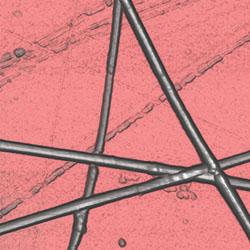- europages
- >
- COMPANIES - SUPPLIERS - SERVICE PROVIDERS
- >
- thermal conductivity
Results for
Thermal conductivity - Import export

ADVANCED MAGNETIC TECHNOLOGIES AND CONSULTING (AMT&C)
Russia
The thermal conductivity measuring insert is intended for measurement of the thermal conductivity coefficient temperature dependencies in constant magnetic field using stationary method. The inner sample holder is equipped with the resistive heaters, resistive temperature sensors and Hall sensor. The thermal conductivity measuring insert characteristics: - relative measurement accuracy of thermal conductivity coefficient: 3 %; - sample dimensions: a rectangular plate 22×4×2 mm; - temperature interval – from 80 to 370 K; - magnetic field interval – from 0.02 to 2 T.
Request for a quote
NT-MDT LLC
Russia
Scanning Thermal Microscopy (SThM) is an advanced SPM mode intended for simultaneous obtaining nanoscale thermal and topography images. NTMDT’s SThM kit is able to visualize temperature and thermal conductivity distribution at the sample surface. The SThM system hardware includes electronic controller, software, and probes. SThM mode of operation with an AFM requires a specialized probe with a resistor built into the cantilever. NTMDT’s SThM module allows one to monitor the resistance changes correlated with the temperature at the end of the probe. So the system is able to monitor relative changes of sample temperature and thermal conductivity. NTMDT’s thermal probes provide better than 100 nm lateral resolution for both topography and thermal images. The specialized SThM cantilever, made of SiO2 with a thin metal layer, is deposited on the probe in such a way that the highest resistance portion of the layer is concentrated near the tip apex.
Request for a quote
NT-MDT LLC
Russia
Rebirth of Force Spectroscopy Advanced Nanomechanical, Electrical, Optical, Thermal and Piezoresponse Studies Fast Quantitative Nanomechanical Measurements and Force Volume Simultaneous Electrostatic and Nondestructive Conductivity, Piezoresponse and Thermal Studies Advanced CantileverType TipEnhanced Raman Scattering and Scanning NearField Optical Microscopy Topography in Attraction and Repulsive Regimes Young’s Modulus and Force Volume Adhesion and Work of Adhesion Conductivity InPlane and OutofPlane Piezoresponse Temperature and Thermal Conductivity Thermoelectric Electrostatic Kelvin Probe Force, Electrostatic Force and Scanning Capacitance Force Microscopy NearField Component of Optical Response TipEnhanced Raman Scattering In HybriD mode the tipsample distance is modulated according to the quasiharmonic law.
Request for a quote
NT-MDT LLC
Russia
HD Scanning Thermal Microscopy (HD SThM) allows studying local thermal properties simultaneously with QNM measurements. From the hardware point of view it was implemented using AppNano VertiSense™ thermocouple probes. The thermal conductivity and temperature mapping modes (CMM, TMM) can be realized by positioning the AFM laser at the end or the central part of the probe, respectively. HD mode working principle allows exceptional spatial resolution of SThM measurements in comparison to conventional Amplitude Modulation (AM) mode. That was demonstrated in TMM of a microheater sample. SThM and HybriD mode is the winning combination for distinguishing between the constituents of polymer blends as demonstrated in the example of a blend of polystyrene (PS) with low density polyethylene (LDPE) (see below). The difference in thermal conductivity of the polymers (PS – 0.12 W/mK; LDPE – 0.33 W/mK) allows the assignment of the colder matrix to LDPE and the hotter islands to PS.
Request for a quoteDo you sell or make similar products?
Sign up to europages and have your products listed
Results for
Thermal conductivity - Import exportNumber of results
4 ProductsCountries
Company type